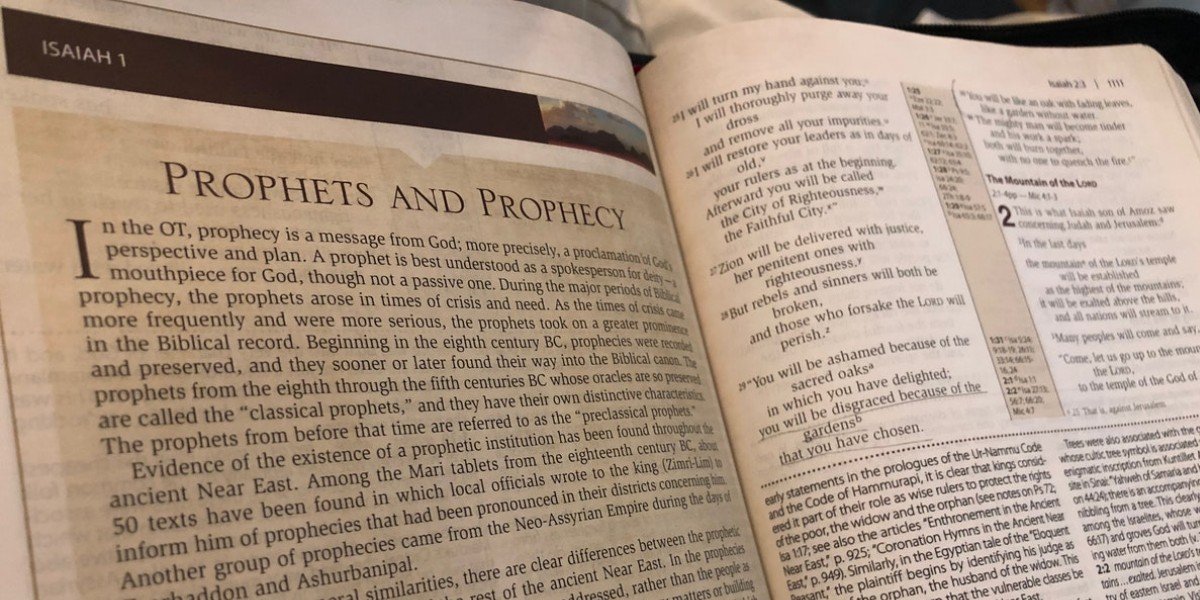Christians, rightly, give emphasis to the New Testament as their principal source of doctrine and their guide for daily living. The four Gospels describe clearly the life, death, and resurrection of Jesus. And they lay down a pattern for disciples in every generation to follow. The Epistles, as well as Acts and Revelation, give added information and instruction.
But both the Old and New Testaments make up the Word of God, and both contain divine revelation and admonition for those who acknowledge Jesus Christ as Savior and Lord, and who seek to live in fellowship with Him.
Scattered throughout the Psalms and the Prophets are scores of references to the incarnation of Jesus and to what He will accomplish both in time and in eternity. But nowhere in the Old Testament is the good news of salvation spelled out more clearly than in the prophecy of Isaiah. Some choose to call it the gospel according to Isaiah.
One of the best-known quotations, which George F. Handel included in his famous oratorio Messiah, states, “Therefore the Lord himself will give you a sign: The virgin will conceive and give birth to a son, and will call him Immanuel [God with us]” (7:14). Written almost seven-and-a-half centuries before the birth of Jesus, this text speaks unambiguously and with certainty about the Incarnation.
John the Baptist, the principal forerunner of Christ, is also seen in Isaiah 40:3-5: “A voice of one calling: ‘In the wilderness prepare the way for the Lord; make straight in the desert a highway for our God. Every valley shall be raised up, every mountain and hill made low. . . . And the glory of the Lord will be revealed. . . .’”
At the beginning of His earthly ministry, Jesus himself called attention to Isaiah’s prophecy. In his Gospel, Luke (4:16ff) tells of Jesus going to the synagogue in Nazareth and reading from the scroll of the prophet Isaiah:
The Spirit of the Sovereign Lord is on me, because the Lord has anointed me to proclaim good news to the poor. He has sent me to bind up the brokenhearted, to proclaim freedom for the captives and release from darkness for the prisoners, to proclaim the year of the Lord’s favor . . . (Isaiah 61:1, 2).
Then Jesus left no doubt that the prophecy was concerning Him: “Today this scripture is fulfilled in your hearing” (Luke 4:21).
The mistreatment and rejection of Jesus is foreshadowed in Isaiah 53:3: “He was despised and rejected by mankind, a man of suffering, and familiar with pain. . . . he was despised, and we held him in low esteem.”
The somewhat hazy but accurate picture is completed with Isaiah’s reference to the Crucifixion: “Surely he took up our pain and bore our suffering . . . he was pierced for our transgressions, he was crushed for our iniquities; the punishment that brought us peace was on him, and by his wounds we are healed” (Isaiah 53:4, 5).
Thank God for the New Testament. It so clearly points to the way of salvation through faith in the crucified, resurrected, and risen Christ. But thank God, too, for the consistent message of the gospel so dramatically and forthrightly presented in the Old Testament, and particularly in the gospel according to Isaiah.






